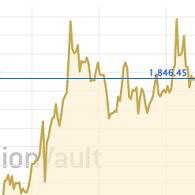Adam Smith and the Theory of Wages
Why wages are not always destined to go down...
ONE GETS an almost cruel pleasure in seeing someone deploy irrefutable logic to destroy an opponent's arguments, writes John Phelan for the Cobden Centre.
I felt it this week reading George Reisman's 'Open letter to Warren Buffett' where the well booted doctrines of Karl Marx got another kicking. By now Marx and his followers ought to be used to this sort of punishment at the hands of Austrians. Eugen von Böhm Bawerk produced his devastating destruction of Marx's economics, Karl Marx and the Close of His System, back in 1896.
But Paul Samuelson was right when he said that "Karl Marx can be regarded as a minor post-Ricardian". Marx simply took the aggregative, labour value theory based economics of David Ricardo and took them to their dismal and erroneous conclusions. And when Reisman writes "The doctrine of class warfare is a derivative of the exploitation theory, whose best-known proponent is Karl Marx" we ought to point out that it is found also in Ricardo's predecessor Adam Smith.
Book One, Chapter VIII, of The Wealth of Nations is titled 'Of the wages of labour'. Smith charts the development from a situation of subsistence production where "the whole produce of labour belongs to the labourer" via the emergence of private property (which gives rise to rent) and stock (which gives rise to profit) to one where a payment for a good must be divided between the labourer (wages), the landlord (rent), and the stockholder (profit).
Smith goes on to say that "It seldom happens that the person who tills the ground has wherewithal to maintain himself till he reaps the harvest. His maintenance is generally advanced to him from the stock of a master, the farmer who employs him and who would have no interest to employ him, unless he was to share in the produce of his labour, or unless his stock was to be replaced to him with a profit" Smith says that "The produce of almost all other labour is liable to the like deduction of profit".
Here we have the genesis of the Marxist theory of the workers alienation from the means of production, exploitation, and 'class war'. Workers do not receive the full product of their labor as they did in the "early and rude state of society which precedes...the accumulation of stock and the appropriation of land". Instead, this product goes to the stockholder as profit and the laborer receives wages.
With wages, Smith states, "The workmen desire to get as much, the masters to give as little as possible". We have Marx's "contending classes". Smith goes on
It is not, however, difficult to foresee which of the two parties must, upon all ordinary occasions, have the advantage in the dispute, and force the other into a compliance with their terms. The masters, being fewer in number, can combine much more easily...In all such disputes the masters can hold out much longer. A landlord, a farmer, a master manufacturer, or merchant, though they did not employ a single workman, could generally live a year or two upon the stocks which they have already acquired. Many workmen could not subsist a week, few could subsist a month, and scarce any a year without employment. In the long-run the workman may be as necessary to his master as his master is to him, but the necessity is not so immediate.
Smith argued that wages would rise when an economy was growing but otherwise he posited a clear general tendency for wages to feel only downward pressures. From this flowed the idea of the 'subsistence wage' with which Malthus earned economics the tag of "the dismal science" and Lasalle's Iron Law of Wages. Wages will stagnate, Smith argues, and profits will rise. Warren Buffett would not disagree.
But looking at the passage from Smith we can see much wrong with it, or at least, much that has no application today.
First, Smith says that stockholders are "fewer in number" than laborers and thus have a kind of oligopoly power. The error here, perhaps less when Smith was writing, is to regard labor as homogeneous. It isn't. Skills, like capital, can be specific to a certain role and, thus non-transferable.
It follows that workers with different skills are not substitutes for one another; they are not, in other words, in competition. No brain surgeon ever accepted a lower wage from the fear that the hospital might hire a juggler instead.
Of course, where labor is unskilled it is homogeneous and we would expect to see the increased competition for jobs and resultant low wages which we do. At this skill level, also, capital can be substituted for labor providing a further downward pressure. The answer here is not to raise the banner of class warfare but to accumulate skills.
Second, Smith says that stockholders "can combine much more easily". However, in practical experience, such cartels are always plagued with problems as we see with OPEC. If a cartel sets a minimum price there is always the temptation for one member to sell below that price and capture the market. Although here we are considering the case where a cartel is setting a maximum price for its labor inputs, the analysis is unchanged as we shall see.
Thirdly, Smith contends that "In all such disputes the masters can hold out much longer". This might well be true but the question has to be asked; why would they? If, by hiring a worker at $30,000 per year a stockholder would increase his profit by $40,000 per year, why would that stockholder hold out, throwing away $10,000, in an attempt to drive the worker down to $20,000?
It could be said that the stockholder will lose out on $10,000 this year but will gain $20,000 in every subsequent year. But Smith said that stockholders were "fewer in number", not that there was only one, so there are those cartel problems. Thus, if, in the initial period, stockholder A is willing to forgo $10,000 and hold out for a wage of $20,000 stockholder B will step in and offer the worker $30,000. He will make $10,000 profit while stockholder A makes nothing. There is a saying about stepping over a Dollar to pick up a penny, in this case stockholder B picks up both.
Indeed, if the worker adds $40,000 to profits it makes sense for the stockholder to employ them at any wage up to that (tax wedges notwithstanding). We have arrived, as economists did after 1870, at the Marginal Productivity Theory of Distribution. This simply states that a factor (labor or capital) will be paid to the value of its marginal product.
So, if hiring a first barman generates $100 a week extra profit for a bar owner, that barman will be paid up to $100. If, however, hiring a second barman adds only $80 a week the marginal product of bar staff has fallen to $80 a week and so will the wage even of the first. If hiring a third barman adds just $50 a week and no one will take the job at that wage no one else will be hired and $80 a week will be the wage.
Of course, if there are two barmen earning $80 a week one could go on a cocktail course. His mojito's might prove a draw, his marginal product will rise and so will his wage. By doing the course, 'upskilling', the first barman is differentiating his labor from that of barman two. Their labor is heterogeneous.
Smith himself saw a situation where in a growing economy, one in which the profits of stockholders were increasing, demand for labor would also increase. In this case "The scarcity of hands occasions a competition among masters, who bid against one another, in order to get workmen, and thus voluntarily break through the natural combination of masters not to raise wages".
However, as we've seen, because of heterogeneity on both the labor (due to non-transferable skills) and stockholder (due to cartel issues) sides of the wage bargain it is this which is the general case and not the previously enunciated tendency for wages to fall and profits to rise. Because some 'hands' are skilled at some things and other 'hands' at other things there is at any given time a "scarcity of hands" in any profession requiring a modicum of skill. And because we have a number of potential "masters" we have at any given time "competition among" them.
Both profits and wages can rise together and the zero sum thinking of Marx and Buffett can be discounted. But Adam Smith's role in this thinking should not be forgotten either.
Buying Gold? Make it safer, cheaper and easier with BullionVault...








 Email us
Email us